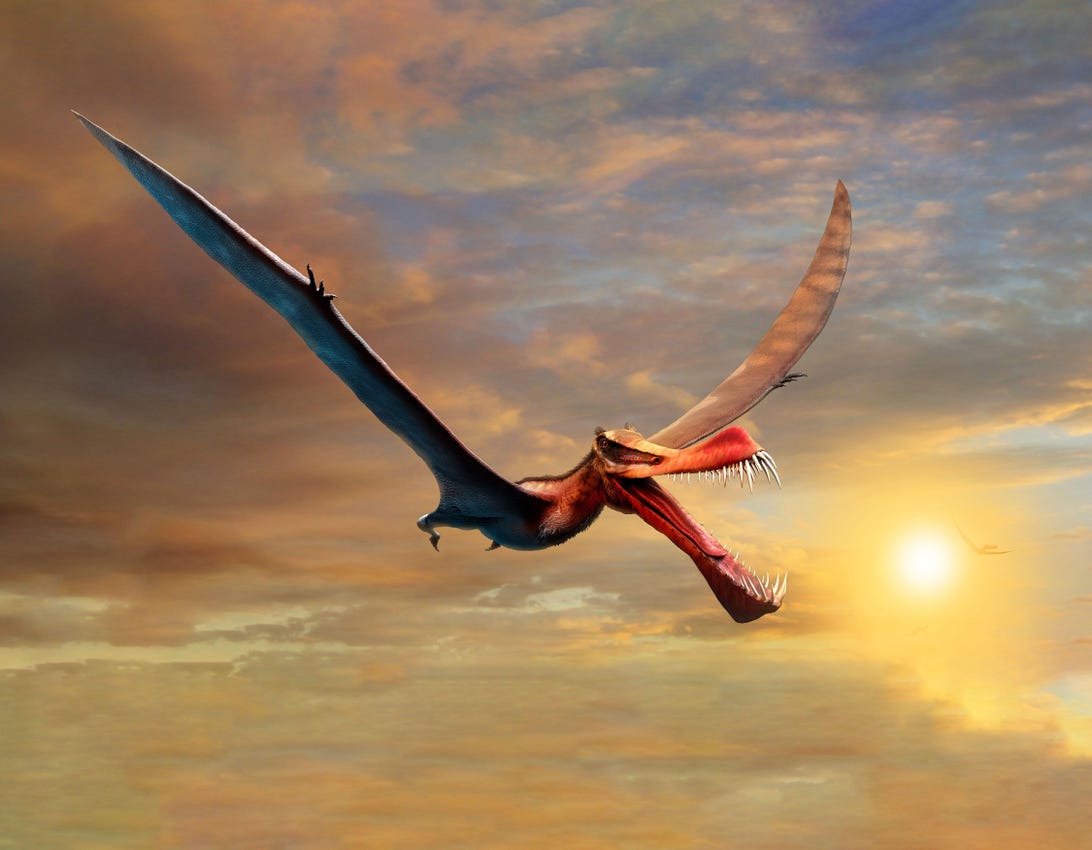
A fearsome beast with wings spanning 22 feet. A mouth like a spear. The closest thing we've seen to a real-life dragon.
That's how Tim Richards describes the Thapunngaka shawi, a flying reptile whose fossils he's been studying at the University of Queensland's School of Biological Sciences. The pterosaur is believed to have once flown above the Australian outback -- long enough ago that it was soaring above inland seas rather than desert.
"This thing would have been quite savage," Richards, a PhD student, said. "It would have cast a great shadow over some quivering little dinosaur that wouldn't have heard it until it was too late."
The name Thapunngaka shawi means "Shaw's spear mouth," with the latter half a reference to its discoverer Len Shaw. The genus name, Thapunngaka, is inspired by the now-extinct language of the Wanamara Nation, one of Australia's First Nations peoples.
Pterosaurs populated the earth as recently as 66 million years ago, before the asteroid death blast ended the dinosaurs' reign, and as early as 228 million years ago. They're distinguished for being the first vertebrae creature -- that is, a creature with a spine -- to take flight. The most famous pterosaur is the pterodacylus, which is why pterosaurs are often incorrectly known as pterodactyls.
Scientists still have much to learn about the ancient creatures. Research published in journal iScience in April showed the secret to pterosaurs' physiology was its neck, longer than a giraffe's and ingeniously arranged by Mother Nature to support their heavy heads during flight. Research published just last month suggests many pterosaurs were able to fly the moment they hatched from their eggs.
To allow for flight, pterodactyls often have bones that are thinner and more brittle than other dinosaurs. That makes such well-preserved fossils as the one Richards is studying rare. Based on the jaw fossils being studied, Richards estimates the skull alone would extend over 3.2 feet and hold 40 (terrifying) teeth.
"By world standards, the Australian pterosaur record is poor, but the discovery of Thapunngaka contributes greatly to our understanding of Australian pterosaur diversity."
Article From & Read More ( The 'fearsome dragon' that terrorized Australia’s skies - CNET )https://ift.tt/37rA4GI
Science
No comments:
Post a Comment